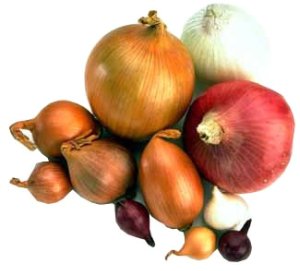FACT: Cooking is crucial to our diets. It helps us digest food without
expending huge amounts of energy. It softens food, such as cellulose
fiber and raw meat, that our small teeth, weak jaws and digestive
systems aren't equipped to handle. And while we might hear from raw
foodists that cooking kills vitamins and
minerals in food (while also denaturing enzymes that aid digestion), it
turns out raw vegetables are not always healthier.
A study
published in The British Journal of Nutrition last year found that a
group of 198 subjects who followed a strict raw food diet had normal
levels of
Vitamin A and relatively high levels of beta- carotene (an
antioxidant found in dark green and yellow fruits and vegetables), but
low levels of the antioxidant lycopene.
Lycopene is a red
pigment found predominantly in tomatoes and other rosy fruits such as
watermelon, pink guava, red bell pepper and papaya. Several studies
conducted in recent years (at Harvard Medical School, among others) have
linked high intake of lycopene with a lower risk of cancer and heart
attacks. Rui Hai Liu, an associate professor of food science at Cornell
University who has researched lycopene, says that it may be an even more
potent antioxidant than vitamin C.
One 2002 study he did
(published in the Journal of Agriculture and Food Chemistry) found that
cooking actually boosts the amount of lycopene in tomatoes. He tells
ScientificAmerican.com that the level of one type of lycopene,
cis-lycopene, in tomatoes rose 35 percent after he cooked them for 30
minutes at 190.4 degrees Fahrenheit (88 degrees Celsius). The reason, he
says: the heat breaks down the plants' thick cell walls and aids the
body's uptake of some nutrients that are bound to those cell walls.
Cooked carrots, spinach, mushrooms, asparagus, cabbage, peppers and
many other vegetables also supply more antioxidants, such as carotenoids
and ferulic acid, to the body than they do when raw, Liu says. At
least, that is, if they're boiled or steamed. A January 2008 report in
the Journal of Agriculture and Food Chemistry said that boiling and
steaming better preserves antioxidants, particularly carotenoid, in
carrots, zucchini and broccoli, than frying, though boiling was deemed
the best. The researchers studied the impact of the various cooking
techniques on compounds such as carotenoids, ascorbic acid and
polyphenols.
Deep fried foods are notorious sources of free
radicals, caused by oil being continuously oxidized when it is heated at
high temperatures. These radicals, which are highly reactive because
they have at least one unpaired electron, can injure cells in the body.
The antioxidants in the oil and the vegetables get used up during frying
in stabilizing the cycle of oxidation.
Another study
published in the Journal of Agricultural and Food Chemistry in 2002
showed that cooking carrots increases their level of beta-carotene.
Beta- carotene belongs to a group of antioxidant substances called
carotenoids, which give fruits and vegetables their red, yellow, and
orange colorings. The body converts beta- carotene into vitamin A, which
plays an important role in vision, reproduction, bone growth and
regulating the immune system.
The downside of cooking veggies,
Liu says: it can destroy the vitamin C in them. He found that vitamin C
levels declined by 10 percent in tomatoes cooked for two minutes—and 29
percent in tomatoes that were cooked for half an hour at 190.4 degrees F
(88 degrees C). The reason is that Vitamin C, which is highly unstable,
is easily degraded through oxidation, exposure to heat (it can increase
the rate at which vitamin C reacts with oxygen in the air) and through
cooking in water (it dissolves in water).
Liu notes, however,
that the trade-off may be worth it since vitamin C is prevalent in far
more fruits and vegetables than is lycopene. Among them: broccoli,
oranges, cauliflower, kale and carrots. Besides, cooked vegetables
retain some of their vitamin C content.
That said, research
shows that some veggies, including broccoli, are healthier raw rather
than cooked. According to a study in the Journal of Agricultural and
Food Chemistry in November 2007, heat damages the enzyme myrosinase,
which breaks down glucosinates (compounds derived from glucose and an
amino acid) in broccoli into a compound known as sulforaphane.
Research published in the journal Carcinogenesis in December 2008 found
that sulforaphane might block the proliferation of and kill
precancerous cells. A 2002 study in The Proceedings of the National
Academy of Sciences also found that sulforaphane may help fight the
bacterium Helicobacter pylori, which causes ulcers and increases a
person's risk of stomach cancer.
On the other hand, indole, an
organic compound, is formed when certain plants, particularly
cruciferous vegetables such as broccoli, cauliflower and cabbage, are
cooked. According to research in The Journal of Nutrition in 2001,
indole helps kill precancerous cells before they turn malignant. And
while boiling carrots was found to increase carotenoid levels, another
study found that it leads to a total loss of polyphenols, a group of
chemicals found in raw carrots. Specific polyphenols have been shown to
have antioxidant properties and to reduce the risk of cardiovascular
disease and cancer, according to a 2005 report in The American Journal
of Clinical Nutrition.
Comparing the healthfulness of raw and
cooked food is complicated, and there are still many mysteries
surrounding how the different molecules in plants interact with the
human body. The bottom line, says Liu, is to eat your veggies and fruits
no matter how they're prepared.
"We cook them so they taste better," Liu says. "If they taste better, we're more likely to eat them." And that's the whole idea.
 The
active ingredient in turmeric is curcumin. Tumeric has been used for
over 2500 years in India, where it was most likely first used as a dye.
The
active ingredient in turmeric is curcumin. Tumeric has been used for
over 2500 years in India, where it was most likely first used as a dye.





